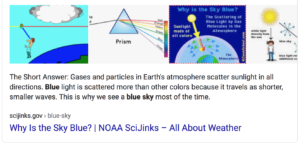Google Will End Behavioral Targeting – What’s The Impact
We’re officially in full swing of 2021, and that has come with tighter privacy and data regulations across the board. Google, who is up against high pressure from regulators around antitrust and data privacy, announced that they will cease the permission of cross-site tracking and targeting of individuals outside its own properties. This would include properties such as in inventory they sell through video ad exchange and Google Ad display.
David Temkin, director of product management and ads privacy wrote in a blog post, “Today, we’re making explicit that once third-party cookies are phased out, we will not build alternate identifiers to track individuals as they browse across the web, nor will we use them in our products.”
Google’s move comes directly after the recent decision of Apple to give users the choice to block the IDFA identifier at the app level, which means apps will be required to ask users for permission to collect and share data.
“This is yet another confirmation the web is shifting to a consent-oriented framework,” said Nii Ahene, Chief Strategy Officer at Tinuiti. “It’s going to be all about opt-in, not opt-out initiatives.”
It is very evident that many of the behavioral targeting capabilities marketers have heavily depended on will fade out or disappear completely, however it is not yet confirmed the exact implications of how this will affect each of Google’s Ad products. The changes are slated to take place at the end of the year and only impact the open web, not mobile app ads purchased and sold using Google’s ad tech.
Important highlights from Google
At this exact stage, here is what we know for sure:
- Google will be completely stopping to build user-level profiles within its ad systems. They will also not use such data to enable targeting on non-Google sites. That means Google’s AdX ad exchange and other services that target ads to web inventory outside Google properties will no longer support any cookie replacement identifiers.
- Google’s ad targeting changes are focused solely on the open web. At this time, the changes will not apply to the mobile app ads bought and sold using Google’s ad tech.
- Google’s targeting changes only will go into effect after the company officially stops recognizing third-party cookies in its Chrome browser. In January 2020, the company said it would do that within two years.
- Advertisers will still be allowed to target their own databases of consumers through their own first-party data on Google properties, such as Google’s search results pages and YouTube.
More from Onimod Global
Onimod Global releases the latest digital marketing news and essential marketing tips every Tuesday and Thursday! To catch up on all Google updates and other top digital marketing news and trends, click here. To find out more about who we are and what we do, click here.
Onimod Global is looking forward to the future and helping your business reach your full digital potential. Interested in growing your digital presence for your company? Reach out to us here!


